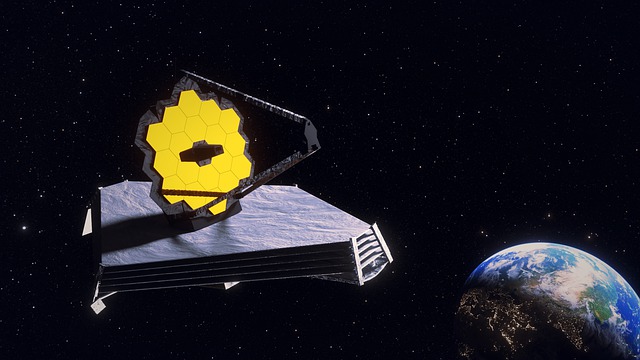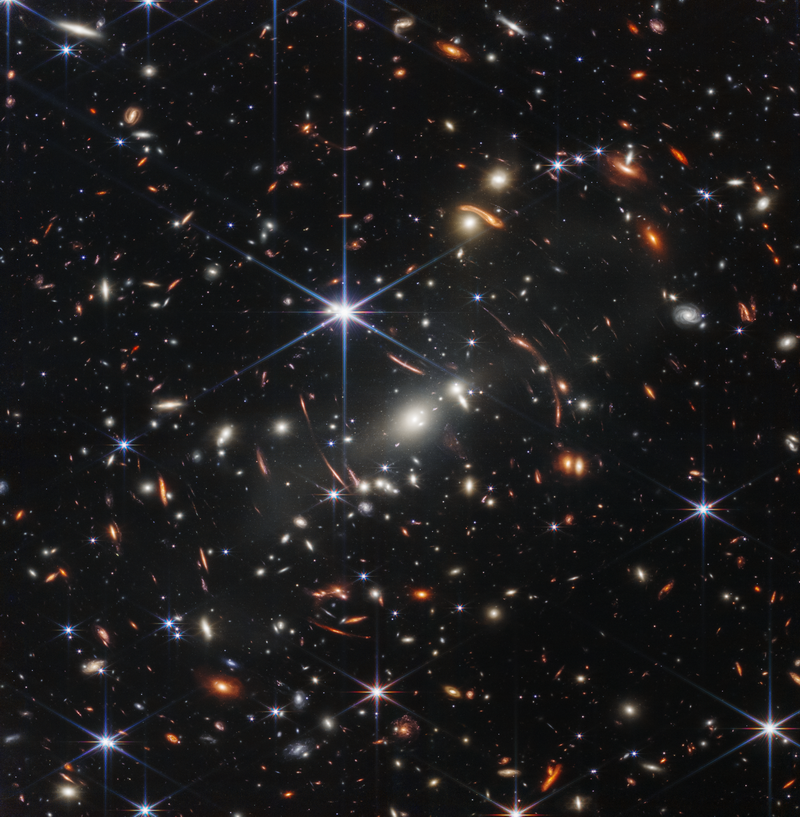and the Vast Expanse of the Dark Matter Sea


| The James Webb
Telescope / The Speed of Light and the Vast Expanse of the Dark Matter Sea |
 |
 |
TLU - (Using the speed of light as a standard). As you look at small distant Stars and Galaxy's, and invoke the constant speed of light as a standard, the red shift of observable light emitting from distant body's should be able to predict time and distance. This is logical and is the current method by which we judge the vast expanse of the Cosmos. For about 100 years the unchanging speed of light has ben considered one of the basic cornerstones of physics. (The infallibility of E=MC²). Oh boy, there is very strong evidence emerging that says, this is not the case any more.
TLU says the speed of light is not the standard that Einstein predicted. We maintain that the young Universe because of expanding Dark Matter, was far more dense. This in turn, changed the speed by which light waves could be streamed in the medium. The speed of early light was actually faster, then slowed for a longer period of time as the universe expanded. In other words, a less dense universe has slower push pull streaming light wave energy, just like the push pull energy of sound in a molecular medium. What makes this prediction of TLU so radical is, light wave energy was assumed to be traveling thru a void of space. In the logical universe theory, it is traveling in a Dark Matter Sea of Universal particles, therefore light speed most certainly can, and will change with the density of the medium, just like sound does.
Enter the James Webb Telescope. Because of its sensitivity to lower frequency's of light, infrared and far infrared, we now can observe much further back in the expansion of the Cosmos, and oh boy, what a surprise for astronomers. It seams that the prediction of the Big Bang and early expansion is off by quite a bit. The extreme distant galaxy's are much further along in their evolution than any one predicted. There is undeniable complexity, formulation and distance of galaxy's at the supposedly near big bang calculation. (b) If the expansion theory is correct, there would most certainly be a long period of time to form Protons. Protons in turn would have to form Electrons and Quantum Fields, which would certainly take time. Next, Spinning Quantum fields would have to create Anti-Gravity so Neutrons and Stars could form. That also takes cosmic time. Next, there is an evolutionary period for stars to burn out and create elements. More time is consumed. Next, it takes time to form Black Stars and capture other stars into gravitational formations. And finally, It requires even more time to organize and form Galaxy's of billions of these stars. So as you can see, the distance and time of the big inflation, most certainly is off by quite a bit. The Logical Universe says we have the speed of light standard to blame. The Universe most certainly is older than most people expected, but not for the Grand Unified Theory.
Final TLU observation - Because Light Speed is faster in the early universe, the expansion has to have ben going on much longer, to get to the present red-shifted measurement of the observed galaxy's. This means the universe began earlier than the fixed speed of light predicts. So the dramatic conclusion is, the most remarkable discovery of the James Web Telescope will probably be, the speed of light in space was faster in the beginning, then gradually slowed to the present value with time. This in turn, adds undeniable proof that light speed in so called empty space is not a fixed standard, it changes. * Now for something that no one saw coming. The Logical Universe says, Empty Space is a concept without evidence, but, the Dark Matter Sea of Polarized Space, is what accounts for the expansion of the Universe, the Changing of Light Speed, the Changing Gravitational Force, and the certainty of Magnetic Wave Propagation.